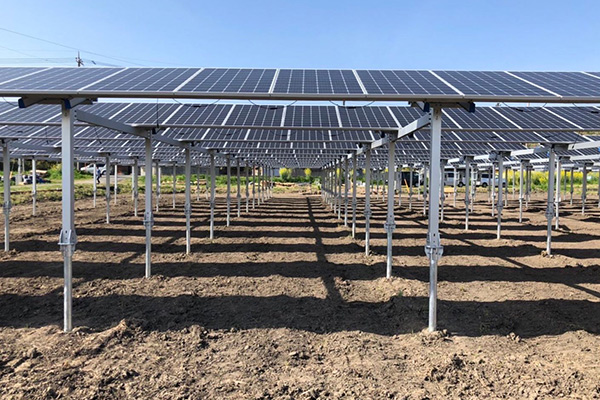Driven by global energy transition and agricultural modernization, agricultural solar mounting systems are emerging as an innovative solution to reconcile the contradiction between “land resource constraints” and “clean energy demand.” This model, which organically integrates solar power generation with agricultural production, achieves composite utilization of “power generation above panels and planting/breeding below” through modular bracket design, intelligent light control technology, and agricultural ecological collaboration. It paves a new path for the integrated development of modern agriculture and green energy.
System Architecture and Technical Core: Intelligent Design Balancing Power Generation and Farming
The core of agricultural solar mounting systems lies in a “compatible” technical system. Their support structures typically adopt height-adjustable steel frameworks (generally 1.5-3 meters above the ground), which not only provide stable support for photovoltaic (PV) panels but also reserve sufficient light and ventilation space for crops below. For example, some systems are equipped with photosensitive sensors that automatically adjust the tilt angle of PV panels according to crop growth cycles, ensuring power generation while enabling crops to receive optimal light intensity. Additionally, integrated microgrid systems convert solar energy into electricity for direct use in farmland irrigation, greenhouse temperature control, or livestock shed power supply, reducing energy costs in agricultural production.
In planting scenarios, the system is particularly suitable for high-value cash crops (e.g., medicinal herbs, edible fungi) or shade-tolerant crops (e.g., strawberries, spinach). The shading effect of PV panels regulates local microclimates, reduces transpiration, and enhances water use efficiency. In livestock scenarios, PV panels provide shelter for poultry and livestock, while the land below can serve as pastures or breeding areas, forming a three-dimensional “PV + breeding” agricultural model.
Multidimensional Value: Triple Benefits for the Environment, Economy, and Agriculture
Environmentally, agricultural solar systems significantly reduce carbon emissions—for instance, a 1-hectare PV agricultural park generates approximately 1.5 million kWh annually, equivalent to reducing 1,200 tons of CO₂ emissions while cutting energy consumption from fossil fuel-driven agricultural machinery. Economically, farmers can increase income through “land leasing + power generation revenue sharing,” with measurements showing that the comprehensive income per mu (0.067 hectares) increases by 30%-50% compared to traditional planting. Government subsidies for renewable energy projects and carbon trading mechanisms further enhance its commercial viability.
For agriculture, the system offers new approaches to address climate change. In arid regions, solar power directly drives drip irrigation systems, realizing integrated “power generation-irrigation.” In areas with abundant sunlight but poor soil, PV panel shading reduces soil moisture evaporation, improves crop growth conditions, and transforms “marginal land” into productive land.
Challenges and Prospects: Technological Iteration Driving Scalable Application
Currently, the promotion of agricultural solar mounting systems faces challenges in costs and adaptability. Initial construction costs are high (approximately 20,000-50,000 RMB per mu), and customized designs are needed to accommodate different crops’ light and temperature requirements. However, with the 80% cost reduction in PV modules over the past decade and the integration of AI algorithms (e.g., light control based on crop growth models), the system’s economy and flexibility are gradually improving.
In the future, this model is expected to deeply integrate with smart agriculture—using IoT sensors to monitor crop growth and power generation data for collaborative optimization of “light-electricity-agriculture.” For example, the Netherlands has piloted combining agricultural solar systems with vertical farms, using PV power to drive LED lighting for indoor planting, increasing land use efficiency by over 10 times. This development path of “three-dimensional land use + localized energy” is becoming a key exploration direction for global sustainable agriculture.
Agricultural solar mounting systems represent not only efficient utilization of land resources but also the intersection of the energy revolution and agricultural modernization. They demonstrate that on limited land, humanity can achieve the dual goals of “producing food” and “producing energy,” providing an innovative and feasible solution for global carbon neutrality and rural revitalization.

